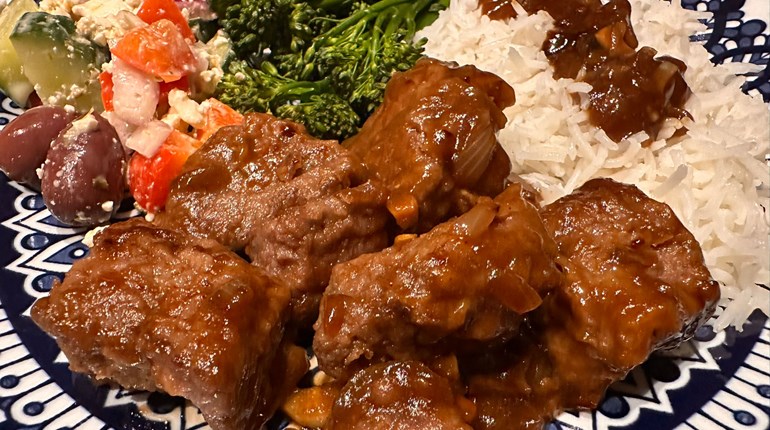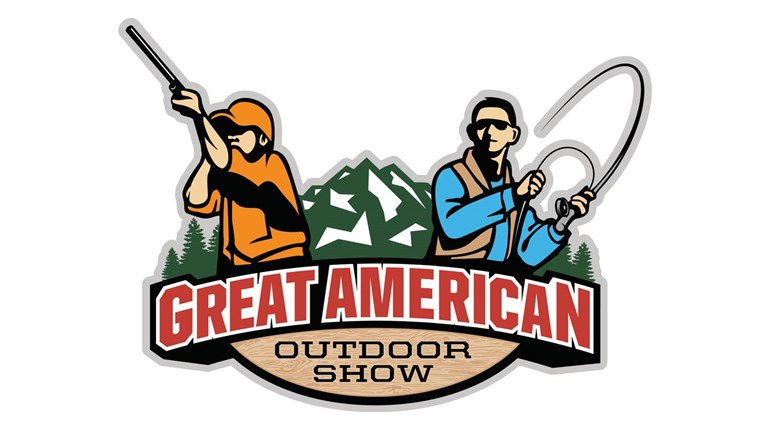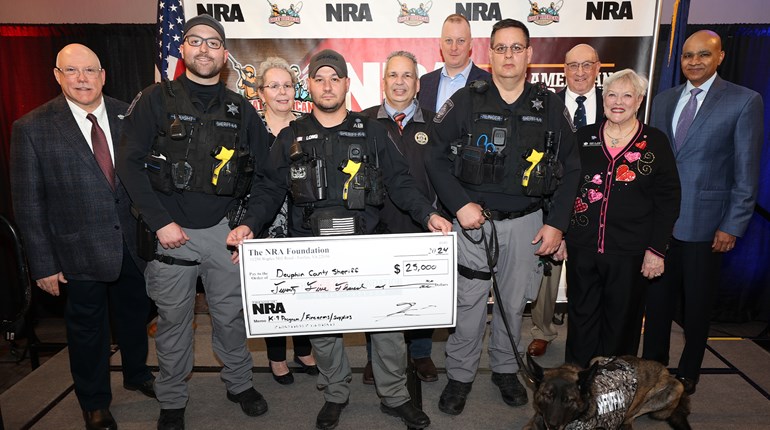
There were all sorts of smells at the Great American Outdoor Show. Funnel cake, crab soup, stained wood and a lingering essence of horse and cattle. Yet, the smell that I’ll remember most was smoked venison.
The hour-long venison cooking demonstration at GAOS covered meat preparation, seasonings, curing, smoking temperatures and times, casings and more. The demonstration was hosted by Rick Fetrow of Grandpa’s Country Catering, a talented butcher with more than 40 years of experience.
Fetrow began the demonstration with smoked venison bologna. The meat was already cut, but needed to be put through the meat grinder. “Don’t overload the grinder. This should take some time,” Fetrow said. A few minutes and a couple of jokes later the meat was ready to be seasoned. Trying to create your own original seasoning can be daunting, and Fetrow made a wonderful suggestion. “You can’t ask a butcher his recipe, he’s sharing nothing, so use a seasoning kit or a popular internet recipe,” he said. His reasoning for kit seasoning? Once you get the basics, you can add, reduce or exchange certain spices to fit your taste. Then before you know it you’ll have your own original recipe.
Along with whatever seasoning you choose, Fetrow made it a point to always add cure. “I’d like to see you all use this with any recipe,” he said. Cure is salt with traces of sodium nitrate that make smoked meat safe for consumption. It helps in removing the foodborne toxin, botulism. Minutes after mixing in the seasoning and cure, the meat changed from a cherry red to a rust brown. A visual proof that the cure is working.
On to the next step: Casing. Fetrow covered various kinds of casings, and ended up using a cloth bag for his bologna. “It’s very porous, which allows the smoke to really get in to the meat.” He loaded the seasoned and cured meat into the sausage stuffer. Before placing the cloth bag on the stuffing tube, Fetrow rinsed it with water. “The water will act as a lubricant to help the meat move smoothly throughout the bag,” he explained. With one hand, and the cloth bag in place, he firmly gripped the stuffing tube with his index finger and thumb, and used his remaining fingers to control the amount of meat that went into the bag. “If you start breaking the bag, loosen your pressure.” While filling the casing, the women of the crowd received a few words of wisdom. “Ladies,” Fetrow said, “if you buy him butchering equipment for every holiday, by the end of the year he’ll survive on his own when you throw him out.” Ah, of course! After he tied off the cloth bag, he walked around showing off his freshly cased bologna, lined with droplets of brown sugar oozing out of the pores.
Now the bologna was ready to be smoked. Fetrow gave a few pro-tips on what to know about a smoker and the best ways to smoke meat. “First,” he began, “know where the heart source is at.” Knowing this will keep you aware of what area of the meat will cook first, which is the area that’s closet to the heat source. Secondly, Fetrow suggested hanging meat is preferable to laying it on a rack. This way it will cook evenly all around.
Smoking times depend on an individual’s smoky preference. Less time, less smoky; more time, smokier. The one thing that should remain the same for all smoked meat is the final internal temperature. The coldest part of the meat, the area that’s furthest away from the heat source, should be no less than 106°F.
At this point, remove the bologna from the smoker and place it somewhere cold but not freezing. An area that’s less than 40°F and more than 32°F; a garage, basement, refrigerator are perfect. Within that area, hang up the bologna. “The longer it hangs, the firmer it will be,” said Fetrow. “Then once that meat has reached your preferred firmness, move it to the freezer in a vac pac.” If you do not have a vacuum sealer, Fetrow suggested a resourceful alternative. “Put your meat in any bag, seal it as much as possible, and then wrap it in newspaper. Things in your freezer get thrown around, and the newspaper will act as insulation, and keep the bag from tearing.”
Then all of a sudden the cooking demonstration area smelled of delicious, smoked-to-perfection meat, pulling in more viewers and doubling the crowd. Fetrow continued and covered the best ways to prepare sausage, jerky and dry venison. He explained every step, talked about the right temperatures, alternative methods if you don’t have certain equipment and innovative devices; one being a thermometer that digitally links to your phone.

To get all the information from the venison demonstration at GAOS, you’ll have to attend it yourself. However, I’ll provide a few important tips Fetrow made throughout the second half, just so you know what you could be missing.
- Sausage should be between 20% and 30% fat; Use fatty bacon from your local grocery store—basically a pack that’s all white when you look at the meat. It’s cheap and will bring a lot of flavor to the sausage.
- When using pig intestine casings, create a funnel with your fingers in the opened end to pour in water. This helps lubricate the inside of the casing.
- Worcestershire and soy sauce should be the main ingredients for your jerky marinade.
- A circulating dehydrator will lead to even and faster cooking.
- Use a jerky gun for hamburger-like jerky meat.
“Deer processing, to me, is part of hunting…it completes the hunt,” Fetrow said as the demonstration was coming to an end. “Make it a day-long family event, it is a lot of fun.”
The venison cooking demonstration was sponsored by Pennsylvania’s Hunters Sharing the Harvest, and Weaver’s of Wellsville.








































